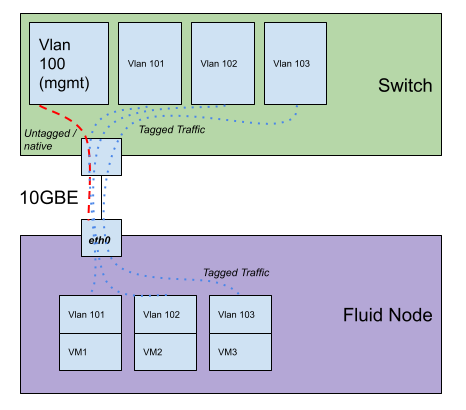VLANs¶
Each Fluid node requires an untagged interface to the internet which it’ll use to acquire a DHCP address, connect to other nodes and establish connectivity to the Fluid Cloud Console. On Cisco devices and devices with Cisco-like configuration interfaces this is referred to as an ‘access port’, if no other VLAN’s are present, or a ‘Native VLAN’ on a trunk port.
If you intend on extending VLAN’s to your Fluid nodes (which can be presented to Elastic Interfaces that can be connected to Virtual Machines - you will need to configure tagged traffic along side the untagged primary VLAN.
On Cisco devices, the config may look similar to the following:
interface GigabitEthernet2/0/12
switchport trunk encapsulation dot1q
switchport trunk native vlan 100
switchport trunk allowed 101-120
switchport mode trunk
Where 100 is the untagged, primary interface the Fluid node will use to PXE boot, connect to the internet and other services and 101-120 are free to be configured from the console for use across your VM workloads.
Refer to the below diagram for a brief outline on how a Fluid node expects it’s VLANs to be presented to it.
